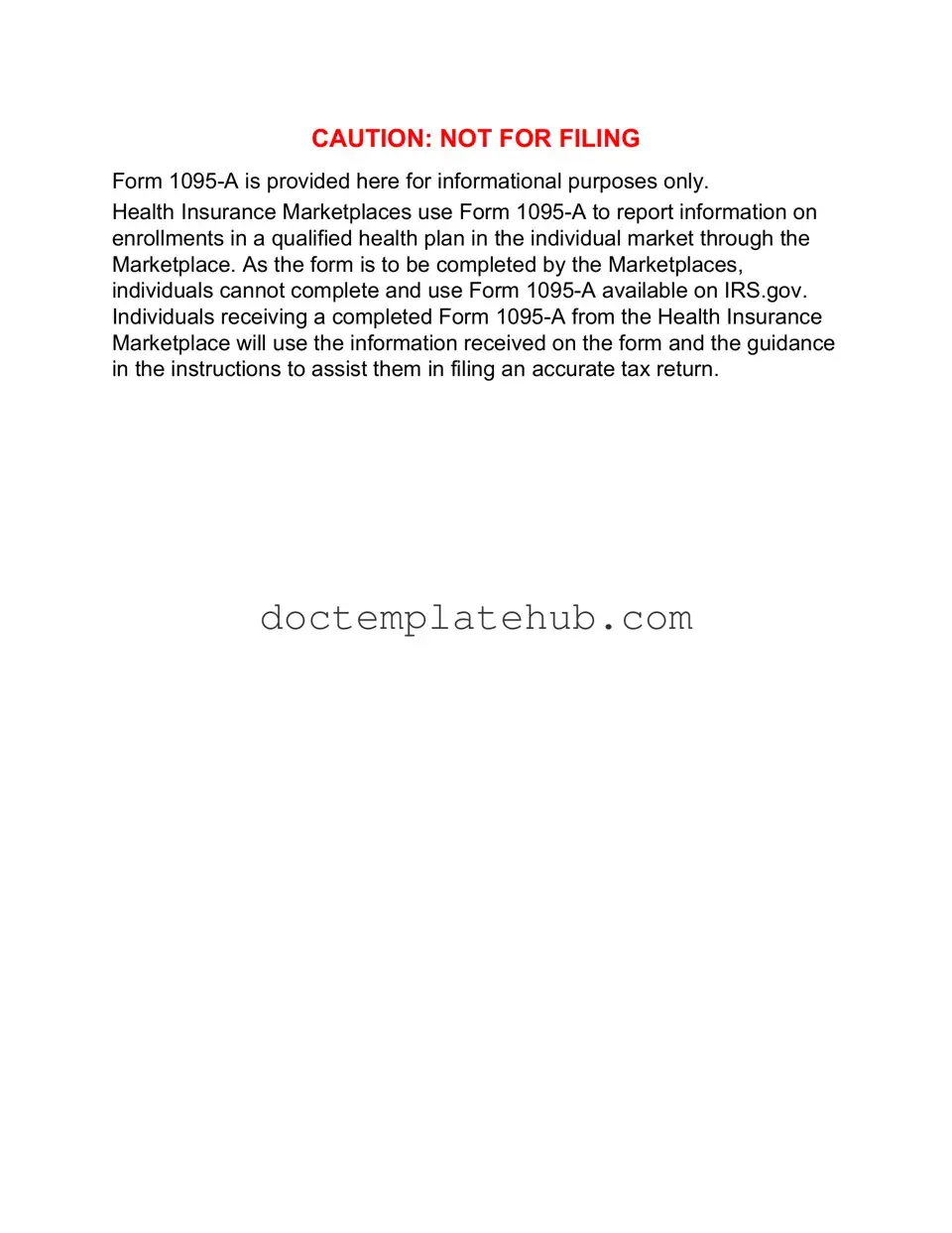What is the IRS 1095-A form?
The IRS 1095-A form is a document that provides information about your health insurance coverage obtained through the Health Insurance Marketplace. It includes details such as the type of coverage you had, the months you were covered, and any premium tax credits you received. This form is essential for filing your federal tax return accurately.
Who receives the 1095-A form?
Individuals who enrolled in a health plan through the Health Insurance Marketplace will receive the 1095-A form. This includes anyone who purchased insurance for themselves or their family members during the enrollment period. The form is typically sent out by the Marketplace by January 31 of each year.
How do I use the 1095-A form when filing my taxes?
You will use the information from your 1095-A form to complete IRS Form 8962, which is used to calculate your premium tax credit. This credit can help lower your tax bill if you qualify. Make sure to report the information accurately to avoid any discrepancies with your tax return.
What should I do if I don’t receive my 1095-A form?
If you do not receive your 1095-A form by early February, you should first check your online account at the Health Insurance Marketplace. If you still cannot find it, contact the Marketplace directly for assistance. They can provide you with a copy of your form or help resolve any issues.
What if the information on my 1095-A form is incorrect?
If you notice any errors on your 1095-A form, such as incorrect coverage dates or premium amounts, you should contact the Health Insurance Marketplace immediately. They will issue a corrected form if necessary. It’s important to resolve these discrepancies before you file your taxes to ensure accuracy.
Do I need to attach the 1095-A form to my tax return?
No, you do not need to attach the 1095-A form to your tax return. However, you should keep it with your tax records in case the IRS requests it later. You will need to reference the information from the form when filling out Form 8962.
Can I access my 1095-A form online?
Yes, you can access your 1095-A form online through your account at the Health Insurance Marketplace. Log in to your account, and you should find a section for tax documents where you can download or print your 1095-A form.
What happens if I don’t file my taxes and I received a 1095-A form?
If you received a 1095-A form and do not file your taxes, you may miss out on potential tax credits that could reduce your tax liability. Additionally, failing to file could lead to penalties from the IRS. It’s important to file your tax return, even if you owe money.
Are there any penalties for not having health insurance if I received a 1095-A?
As of 2019, there is no longer a federal penalty for not having health insurance, thanks to changes in the law. However, some states may have their own individual mandates with penalties. Be sure to check your state’s requirements to avoid any issues.
How can I correct my 1095-A form if I filed my taxes with incorrect information?
If you filed your taxes using incorrect information from your 1095-A form, you may need to file an amended tax return using Form 1040-X. Make sure to include the corrected 1095-A information and any necessary adjustments to your tax credits. It’s advisable to consult a tax professional for guidance in this situation.
